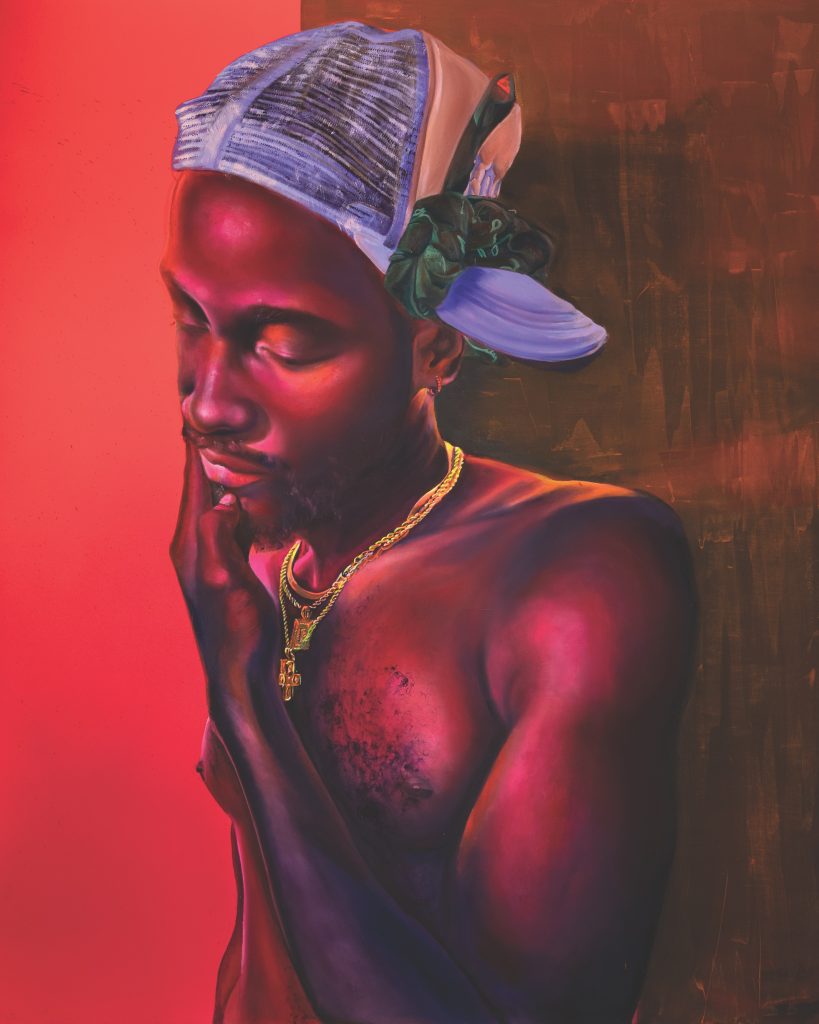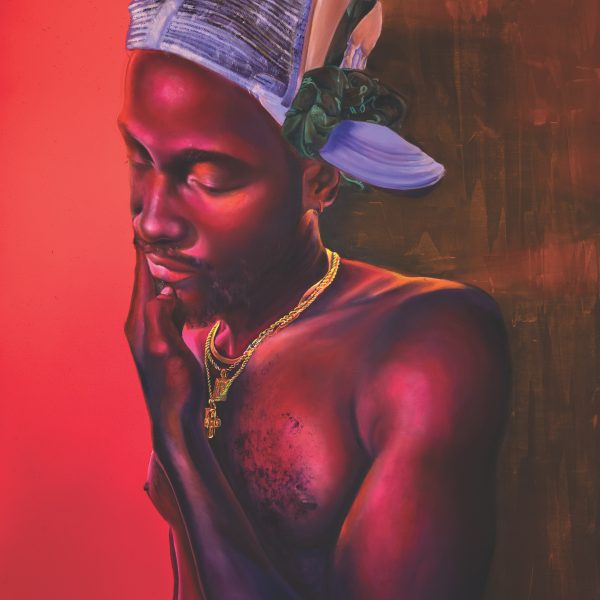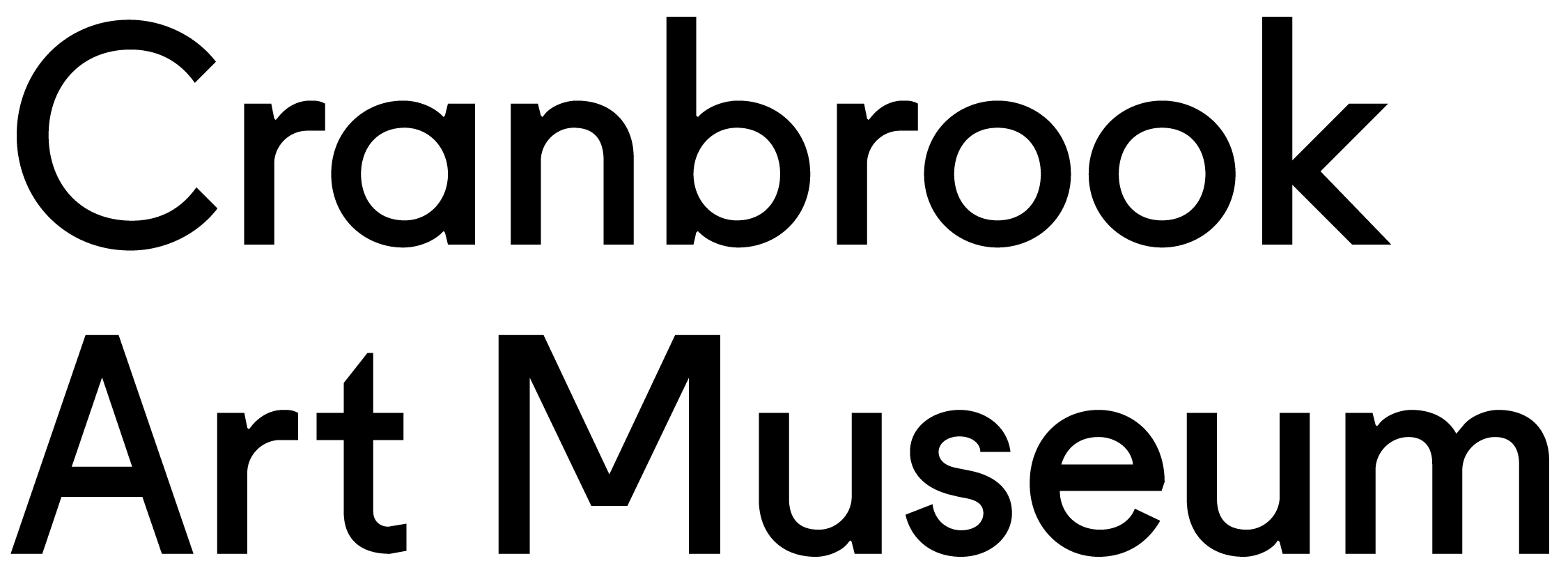Throughout the run of the landmark exhibition Skilled Labor: Black Realism in Detroit, Cranbrook Art Museum hosts artist-led tours for small groups. These tours will be led by artists included in the exhibition and have been paired together based on connections to each other and their work. The tours will be informal discussions about the artwork and this community of Detroit artists.
Each self-taught, Durden and Cortez have built distinct and powerful mural painting practices.
Bakpak Durden lives and works in Detroit, where they were born and raised.
Durden is a self-described “self-taught, multi-hyphenate, anti-disciplinary artist, alchemist, and mystic.” Pulling from various figurative art techniques, movements, and styles, including hyperrealist representation, Baroque art, and surrealism, Durden employs a wide range of mediums—paint, graphite, film photography, and the written word—to construct hyper-surrealistic and conceptual works of art. Durden’s artworks illuminate the complexity and precarity of human emotion, universal existence, spiritual existence, and identity by conscientiously examining their own. Durden is focused on continuing their work within community, highlighting Black trans, post-gender and queer resiliency in addition to mental health, neurodiversity, and disability advocacy.
Their past exhibitions include Salon Redux at David Klein Gallery in Detroit and Embodiment at Heron Arts in San Francisco. Their solo exhibitions include The Eye of Horus at Cranbrook Art Museum (2022), and INTERMEDIUM (2023), at University of Michigan’s Stamps Gallery. They are also the steward of Paper Street Press Co., a zine press and collaborative project, creating chaos through print media.
Ijania Cortez lives and works in Detroit, where she was born and raised.
Cortez is a self-taught artist whose practice is centered around painting but also includes murals and mixed-media works. Cortez is known for the utilization of color in her portraits, which consist exclusively of depictions of Black men from the inner city. Her work, influenced by a modest childhood in 1990s Detroit and her love for the residents there, serves to create conversations between painting and the viewer. She uses neon color to connote the modern era, showing her subjects as natural and central in environments that are unnatural, a reflection of the human-made conditions of the city. Ultimately, Cortez interrogates beauty and vulnerability in masculinity, as well as the ability to thrive and exist despite adversity.
Her first solo exhibition, A Summer Nativity, was held at Camilo Pardo, Detroit, in 2017.
Tagged: Artist Talk, Cranbrook, lecture, Lecture Series
Watch Previous Lectures






